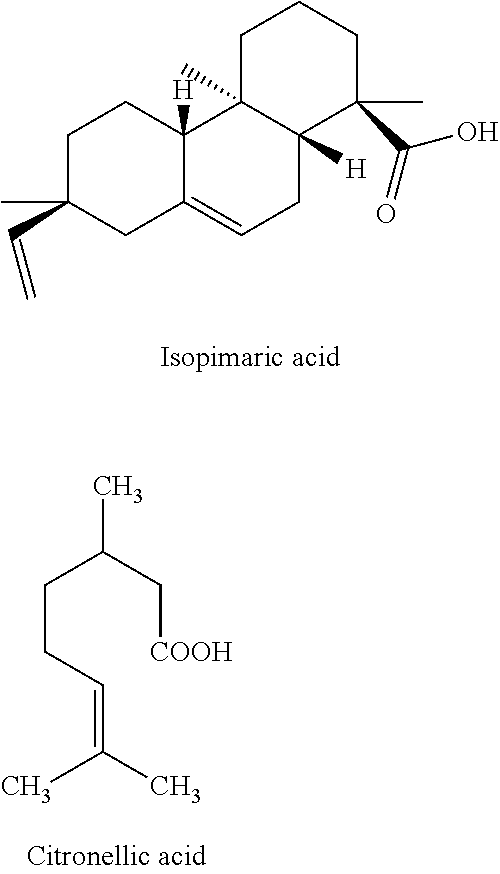Aqueous inkjet pigment dispersion, method for producing same, and aqueous inkjet ink
- Summary
- Abstract
- Description
- Claims
- Application Information
AI Technical Summary
Benefits of technology
Problems solved by technology
Method used
Image
Examples
examples
[0177]Hereinafter, the invention will be explained more specifically by way of Examples; however, the invention is not intended to be limited to the following Examples as long as the gist is maintained. Unless particularly stated otherwise, the unit “parts” is on a mass basis.
synthesis example
Synthesis of Pigment Dispersing Polymer P-1
[0178]Pigment dispersing polymer P-1 was synthesized as follows.
[0179]Methacrylic acid (170 parts), benzyl methacrylate (830 parts), and isopropanol (375 parts) were mixed, and thereby a monomer supplying composition was prepared. 2,2-Azobis(2-methylbutyronitrile) (22.05 parts) and isopropanol (187.5 parts) were mixed, and thereby an initiator supplying composition was prepared.
[0180]Next, isopropanol (187.5 parts) was heated to 80° C. in a nitrogen atmosphere, and a mixture of the monomer supplying composition and the initiator supplying composition was added dropwise thereto for 2 hours. After completion of the dropwise addition, the mixture was maintained at 80° C. for another 4 hours, and then was cooled to 25° C. After cooling, the solvent was removed under reduced pressure, and thereby, pigment dispersing polymer P-1 having a weight-average molecular weight (Mw) of 29,000 and an acid value of 110.8 mg KOH / g was obtained.
[0181]The weig...
example 1
Production of Pigment Dispersion
[0188]150 parts of pigment dispersing polymer P-1 obtained as described above was dissolved in water, and an aqueous solution of the pigment dispersing polymer was produced using an aqueous solution of potassium hydroxide such that the pH after neutralization was 9, and the concentration of the pigment dispersing polymer was about 25% by mass.
[0189]180 parts of this aqueous solution of the pigment dispersing polymer, 94.5 parts of Pigment Red containing added rosin acid Ca (mixture of calcium abietate, calcium neoabietate, and calcium palustrate) (rosin acid Ca-added PR) 122 (manufactured by Fuji Pigment Co., Ltd., FUJI FAST RED, amount of addition of rosin acid Ca to pigment: 5% by mass) (hereinafter, also referred to as rosin acid Ca-added pigment A), and 325.5 parts of water were mixed, and the mixture was subjected to a dispersing treatment for 3 hours using a beads mill (bead diameter: 0.1 mmφ, zirconia beads). Through this dispersing treatment, ...
PUM
 Login to View More
Login to View More Abstract
Description
Claims
Application Information
 Login to View More
Login to View More - R&D
- Intellectual Property
- Life Sciences
- Materials
- Tech Scout
- Unparalleled Data Quality
- Higher Quality Content
- 60% Fewer Hallucinations
Browse by: Latest US Patents, China's latest patents, Technical Efficacy Thesaurus, Application Domain, Technology Topic, Popular Technical Reports.
© 2025 PatSnap. All rights reserved.Legal|Privacy policy|Modern Slavery Act Transparency Statement|Sitemap|About US| Contact US: help@patsnap.com


